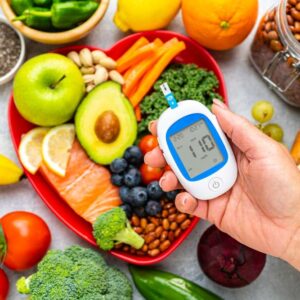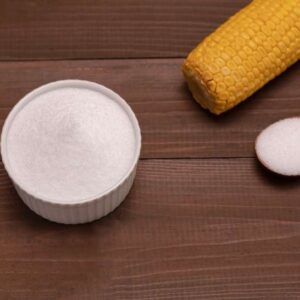Study Reveals Underlying Cause of Heart Disease and Cancer
Dear Reader,
“So I can never open my windows? Great. I’ll be sick all the time…”
When I moved to Baltimore last September, I signed the lease for my apartment sight unseen.
Unfortunately, while advertised as a “coveted corner unit with extra windows,” the management company forgot to mention that none of the six windows actually open.
This means all of the air pollutants produced from one human, two dogs and one very large cat are trapped in my living space, and the only relief I get is through the minimal filtration of my HVAC system.
And while my landlord is vigilant about changing the HVAC filters and keeping the air ducts clean, which has kept my home air quality decent enough to prevent constant eye, nose, and throat irritation, I wouldn’t say the air in my home is exactly “fresh.”
So I often think it would be great to get some fresh air circulating through my dwelling.
Or would it?
You see, according to a recent study, poor urban air quality is linked to the most common chronic health issues in modern times. And since I live in the center of an urban area, letting in the “fresh air” may be detrimental to my health and could even end in cancer and heart disease.
![]() Tiny Particles, Big Risks
Tiny Particles, Big Risks
A new study published in the journal Cancer Epidemiology, Biomarkers & Prevention followed 66,820 adults who were 65 years of age or older in Hong Kong for 10–13 years.
During this time, the researchers tracked the causes of death of all participants throughout the study, specifically documenting cancer deaths.
Simultaneously, scientists collected hourly air samples. The data from the sampling was calculated to estimate of the annual concentration of fine particulate matter (2.5 microns or smaller), which is a type of deadly air pollution. These concentrations helped to estimate each participant’s exposure to fine particulate matter over the length of the study.
Fine particulate matter contains acid, dust, metal, soil particles and mold spores, which contribute greatly to air pollution and can create a fog or haze (think smog).

A Chinese woman trying to decrease her intake of particulate matter with a breathing mask. Source:news.sina.com.cn
At the end of the study, researchers found that consistent exposure to fine particulate matter raises your chances of dying from cancer significantly.
In fact, for every 10 μg/m3 increase of particulate matter (for reference, New York City’s level is only 14μg/m3), the risk of dying from breast cancer increased 80 percent; 73 percent from vaginal cancers; 42 percent from cancers of the upper digestive tract; and 35 percent from cancer of the digestive organs, like the liver, gallbladder and pancreas.
But the increase wasn’t just for these specific cancers. The results concluded that your chance of dying from any type of cancer increased by 22 percent for every 10 μg/m3 increase in exposure to fine particulate matter.
But the health dangers don’t stop there. Fine particulate matter is linked to other health issues and, more importantly, isn’t exclusive to China. Actually, there are North American cities that experience levels of fine particulate matter similar to those found in this Hong Kong-based study.
![]() Not Just China’s Problem
Not Just China’s Problem
Data from cities all over the world show that deaths and hospital admissions from heart and lung issues increase greatly soon after spikes in air pollution levels.

Particulate matter-filled smog hanging over Los Angeles, California. Source:www.arb.ca.gov
This is because these tiny particles can get deep into your lungs, and some can even enter your bloodstream, which, in turn, also trigger devastating symptoms like heart attack, aggravated asthma, irregular heartbeat and decreased lung function.
And recently, air pollutants have been linked to other severe conditions like diabetes, obesity, autism and cognitive decline. To sum it up, poor air quality could be the cause of the most common chronic health issues you are faced with today.
The problem is you’re going to be exposed, regardless of if your windows open or not. Outdoor air will seep into your home through ventilation systems and regular opening of doors and windows. This means you need to protect yourself from fine particulate matter in your home.
One way to do this is with a quality air purifier.
Air purifiers use HEPA filters to drastically reduce the levels of fine particulate matter in your home — some HEPA filters can filter out particles as tiny as 0.3 microns. This means the filter can reduce your exposure to these cancer- and heart attack-linked particles.
In fact, one study shows that HEPA filters can reduce the overall level of indoor fine particulate matter by 40 percent.
Another important feature to look for in an air purifier is a carbon-activated filter. These filters can remove impurities and contaminants and is some cases can remove up to 99.97 percent of airborne contaminants when coupled with a HEPA filtration system.
I recently purchased the Alexapure Breeze air purification system, and I’m now breathing easy. The air in my home is fresher, and I can already feel difference in my energy and overall well-being.
Live well,

Natalie Moore
Managing editor, Living Well Daily
Sources
[1] Urban Air Pollution and Increased Mortality Rates
[2] HEPA Air Filters May Improve Cardiovascular Health
[3] Alexapure Breeze Energy-Efficient HEPA + IonCluster Air Purification System – White
Written By Natalie Moore
Natalie Moore is a dedicated health researcher with a passion for finding healthy, natural, and science-based solutions. After a decade of direct healthcare experience in western and natural medicine, she was involved in public health research before joining Living Well Daily.
View More Free Articles
This Sleep Mistake Is Doubling Your Disease Risk
Think your inconsistent bedtime is just a harmless habit? Think again. New research reveals that going to bed at different times each night isn’t just making you tired—it could be dramatically increasing your risk of serious diseases. But the key to making sure poor sleep doesn’t derail your health goals likely isn’t what you think…....
Stop Obsessing Over Diet Trends
Can we stop with the endless diet debates already? Every other week there’s a new headline shouting about which diet is best for weight loss, heart health, or diabetes. Paleo, keto, low-carb, high-protein… it’s exhausting. And now, a new meta-analysis is out comparing the Mediterranean diet, the DASH diet, and something called AHEI (that’s “Alternative...
A New Reason to Ditch Processed Junk
If you’ve ever walked the inside aisles of your local grocery store and thought, “This is all just junk,” your instincts were spot on. A new study published in the journal Thorax just added another red flag to the list of dangers linked to ultra-processed food—a 41 percent higher risk of lung cancer. That’s right....
When Being Winded on Stairs Is Serious (And When It Isn’t)
I had an athlete visit me recently because he experienced shortness of breath while climbing stairs. He is in great shape, so he was worried about what it might mean. “Doc,” he said, “I run five miles three times a week. Why am I huffing and puffing after two flights of stairs?” His concern is...
Study EXPOSES Hidden Danger Lurking in Your Car
We think of our homes and cars as safe havens. But according to a startling new study, they may be flooding your lungs with microscopic plastic particles—every single day. Researchers in France recently found that adults inhale an average of 68,000 microplastic particles daily from indoor air alone. To put that in perspective, that’s about...
Mailbag: Is Modern Food Making You Snore?
“What can cause snoring, and is there a way to correct this issue?” —Seeking Silence Hi Seeking, Snoring happens when the soft tissues in your throat relax and vibrate as air passes through during sleep. While several factors can cause snoring—from sleep position to nasal congestion—I want to share one trigger that might surprise you....
Simple Food Swap SLASHES Dementia Risk 28%
Let’s be honest… who would jump at the chance to cut their dementia risk by 28 percent. And no, you don’t need to run marathons, survive on broccoli, or learn to play the zither (whatever that is) to make it happen. All it takes is one easy swap—something that’s probably already in your refrigerator. Researchers...
This SMART Floss Exposes Hidden Health Danger
Scientists have created dental floss that doesn’t just clean between your teeth—it also tracks your stress while you’re flossing. Now, I know what you’re thinking… “Great—now even flossing is going to stress me out by telling me how stressed I am.” But this fascinating new tool from Tufts University could be a game-changer for understanding...
Is This "Safe" Sweetener Damaging Your Brain?
The headlines are alarming… “Popular Sugar Substitute Linked to Brain Cell Damage” and “Erythritol Could Damage Critical Brain Barrier” are just two of the dozens I’ve spotted recently. But before you toss every sugar-free product in your pantry, let’s take a closer look at what this study actually shows—and what it doesn’t. The latest research...
This Summer Threat Could SPIKE Your Blood Sugar
Picture this… It’s another scorching hot summer day. You crank up the air conditioning while watching the weather forecast, which predicts yet another “record-breaking” heat wave. It’s starting to feel like just another miserably uncomfortable summer. But what you might not realize is that—if you have diabetes—those rising temps could do far more damage to...









